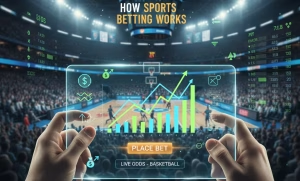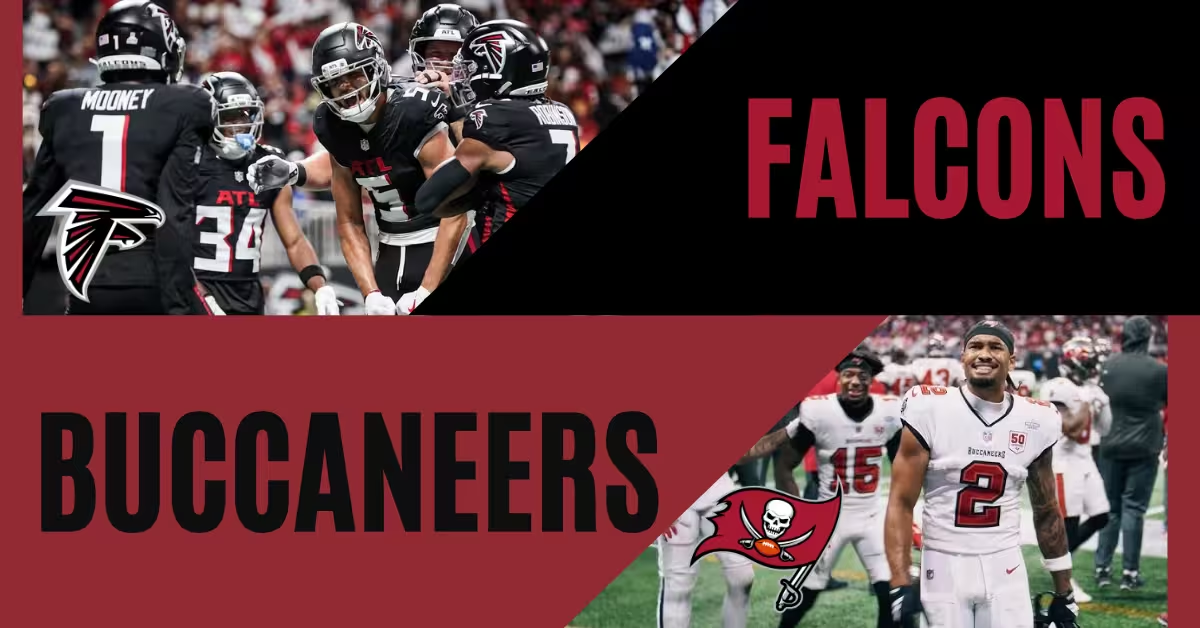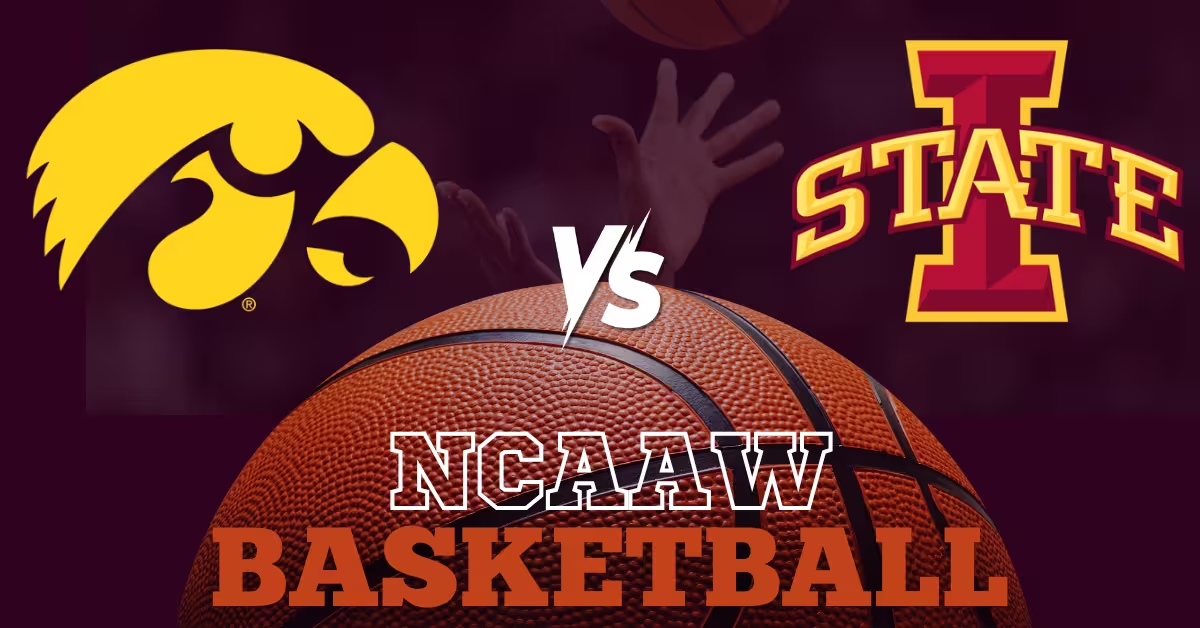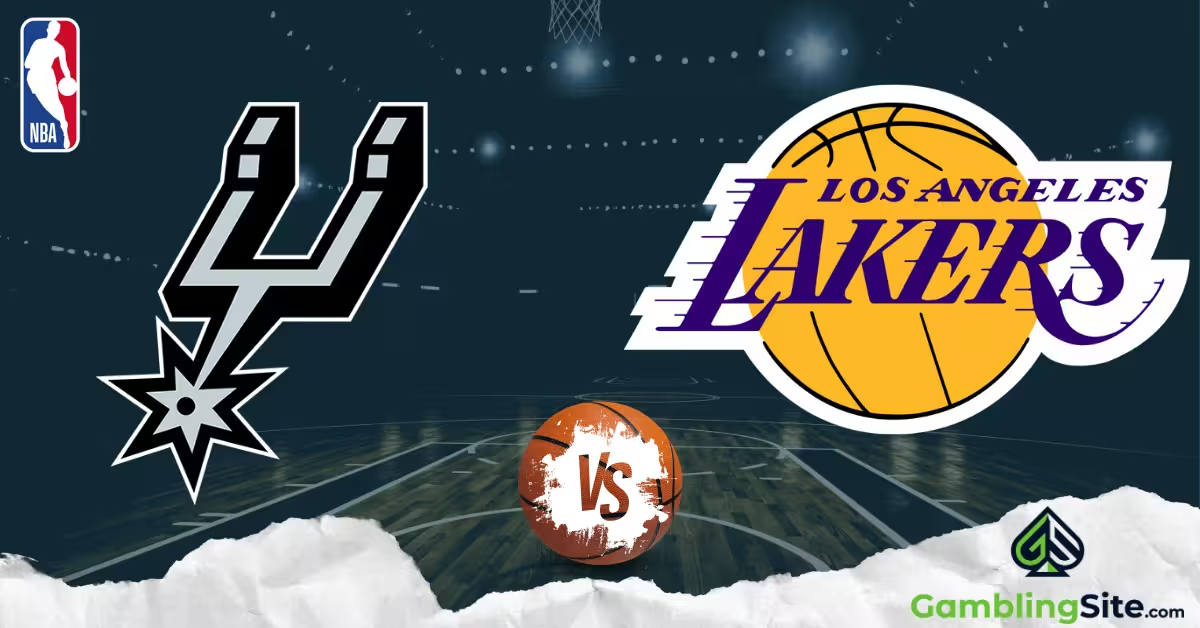What Is ‘Closing Line Value’—And Why Sharps Swear By It
Have you ever heard someone talking about how they beat their closing line by 2 points? Maybe you have and didn’t have a clue what they were going on about. Or you could’ve never heard it before in your life and are now curious about what the heck we are going on about.
Did we pique your interest? What the imaginary person above was talking about when they said, “I beat the closing line by 2 points,” they’re talking about Closing Line Value (CLV).
What is it? It’s the difference between the odds (or point spread) you bet and the final odds right before the game starts. It’s basically a way to measure if you got a better deal on your wager than everyone else by game time.
As it turns out, this is a pretty big deal. And the sharp bettors? You know, the ones who treat sports betting like an investment, swear by CLV as one of the best indicators of long-term success. But why is it so important, and how can you use it to your advantage? Stick around to find out!
What Is Closing Line Value (CLV)?
Closing Line Value is a fancy way of saying this: it measures how the odds you locked in compared to the closing line (the final odds or point spread right before kickoff). If your bet was at better odds than where the line closed, you’ve got positive CLV; if you got a worse number than the closing odds, that’s negative CLV. CLV asks this: “Did I beat the market?”
Here’s the difference between positive and negative when it pertains to CLV:
- Positive CLV: You bet at odds that were more favorable than the closing odds. Maybe you grabbed an underdog at +140, and they closed at +115. Congrats! You snagged value before the market shifted! You got a better price than most people did.
- Negative CLV: You took a price worse than what the later bettors got. If you bet a favorite at -7 early in the week, but by game time, the line moved to -5.5. Oops! Late bettors have the better number, and you’d need a bigger win margin to cash in on your bet.
Look at it like you’re buying a stock before the price goes up. If you buy low and the price rises? You have value on paper (even if you haven’t “cashed out” yet). If the price drops after you buy, you’re holding a worse deal than the market’s current offering. CLV applies that same idea but to sports betting!
CLV in Action
It’s Monday, and the NY Giants are -3 favorites against the Eagles for Sunday’s game. You feel like that line is a little low; maybe you think it will go up, so you bet the Giants -3 at the standard -110 odds. As the week passes, news breaks that Philadelphia’s star quarterback might sit out, and a lot of money pours in on the Giants. By Sunday, NY closes at -5.5. What does that mean for you?

- You have the Giants -3, while the closing line is Giants -5.5.
- That’s 2.5 points of positive CLV in your pocket. In betting terms, you beat the market by 2.5 points, and that’s a huge deal in NFL spreads where games usually land near the number.
- Even if the Giants end up only winning by 4 (so they don’t cover the closing -5.5), you would still win your -3 bet while late bettors lose. That’s the power of getting the best number!
Now do the opposite: if the line had moved against you (say it went down to Giants -2 because their running back got injured mid-week), you’d have negative CLV of 1 point (since your -3 is worse than -2). In that case, a 3-point NY win would make you push/lose while late bettors at -2 win. Oof.
The goal, of course, is to rack up as many positive CLV bets as possible. But why does it matter so much?
Why Sharps Care So Much about CLV
Sharps, aka the serious bettors who do this for profit, are pretty much obsessed with CLV. They know that if you regularly beat the closing line, you’re likely making +EV bets (positive expected value) and setting yourself up to profit in the long run. The following is why CLV matters so much:
By the time a game is about to start, the odds have absorbed all the available info and action. Early lines are based on predictions, but closing lines reflect the market’s collective wisdom, like injuries, weather, sharp action, public betting, you name it. Studies have shown that closing lines predict game outcomes better than opening lines. One NFL analysis found that from 2007–2020, closing spreads picked the winner 65.9% of the time vs. 63.5% for the opening spread. The closing number is considered the most efficient, “truest” price for a matchup . If you can consistently bet at better odds than that final price, it means that you spotted value before everyone else did.
In betting, short-term results can snooker you. You might win a few bets due to luck (or lose a few due to bad luck), but CLV is a more reliable predictor of whether you’ll win long-term. CLV is kind of like a betting report card: if, after 100 bet,s you’re routinely getting closing line value, it’s a good sign you have an edge. Sharps track CLV religiously. Sportsbooks track it too; if a customer is regularly beating the closing number, it raises eyebrows, and there are books that will limit or ban bettors who do nothing but crush the closing line, because it signals that bettors could be a little too skilled or using inside info.
Beating the line by a tiny bit might not seem like it matters on a single bet. Grabbing an NFL underdog at +160 that closes at +135, or getting +3.5 on a spread when it closes +3, won’t guarantee a win on that one bet. But over hundreds of bets? Those little edges compound like interest.
One calculation shows that beating the spread by even 0.5 points can improve a bettor’s win rate from a breakeven of ~50% to about 52-53%, which turns a coin-flip strategy into a profitable one. In other words, a half-point here and an extra +10 or +20 cents there will push your overall returns higher over time.
CLV can also be used as a really useful feedback mechanism! If you’re making picks and constantly closing on the wrong side of the number (negative CLV), that’s a sign that something’s off in your approach. But if you’re regularly beating the closing line, it can boost your confidence that you’re doing something right, even if a few bets don’t go your way.
If you bet a basketball team at +6.5 and they close +4, even if they lose by 10 (your bet loses), you can take some solace in knowing you made a good bet value-wise. In contrast, someone who bet -4 on the favorite might have won that single bet, but in the long run, always taking worse numbers will catch up to them. Sharps would much rather lose a good-value bet than win a bad-value bet, because they know which one is repeatable. Over lots of trials, good bets always win out.
Sharps care so much about CLV because it’s the closest thing to being a psychic for future profit. If you keep beating the closing line, profits will follow; not every time, not immediately, but inexorably over the long haul. It’s the same reason a casino knows it will make money despite a few unlucky nights; if the odds are in your favor, time is on your side.
How to Measure Your CLV
Understanding CLV in theory is good to know, but you’ll want to track it in practice for your own bets! After you place a wager, check what the closing line is for that same bet. Comparing the two gives you the CLV. Look below for a step-by-step way to measure your CLV:
- Place Your Bet: Lock in your wager at whatever odds/line you like. Maybe you bet the Buffalo Bills moneyline at -150 on Tuesday.
- Note the Closing Line: Once the game is about to start (or right after it starts), find out the final odds for that same market. This info is always available on the sportsbook, on odds comparison websites, or in sports betting apps.
- Compare the Numbers: Did you get a better price than the closing line or a worse one? In this case, you bet -150, and the closing line was -170. Lower (less negative) odds on favorites are better, so -150 is better than -170 – that’s positive CLV for you. If the Bils closed at -130 instead, your -150 would be worse (negative CLV). For point spreads, compare the point values: betting a team at +7.5 when it closes +6 is positive CLV (you got an extra 1.5 points); betting -7 when it closes -5.5 is negative CLV (you gave up 1.5 points).
- Record It: Keep a log of your bets and if you beat the closing line. After enough bets (50, 100+), calculate how often you’re beating the close (your CLV “win rate”). Ideally, you want this percentage to be well above 50%, meaning that you’re beating the line more often than not. The higher, the better. Consistently being at 55-60% or more is a strong sign that you have a solid edge. If you’re below 50%, it’s a signal that you should rethink your strategy.
Want to track your CLV? There’s an app for that! Actually, there are several, along with some valuable tools:
- Bet Tracking Apps: Apps like Betstamp or the OddsJam Bet Tracker will automatically track the closing line for your bets. You input (or sync) your wager and odds, and the app updates with the closing odds once the game starts, showing your CLV as green (if you beat it) or red (if you didn’t). This is a really easy way to monitor your performance at a glance.
- Odds Comparison Sites: Websites that display live odds from multiple sportsbooks can be super useful for seeing line movements. If you want to check how a line moved from open to close, you can use an odds comparison tool like OddsTrader or VegasInsider. If you bet a game early, you can look up that game later to see what the closing consensus line was. This helps you verify your CLV after the fact.
- CLV Calculators: A few online calculators let you input your odds and the closing odds to compute the exact CLV percentage. This converts the odds into implied probabilities (removing the sportsbook’s juice) to show how much of an edge you gained or lost. It’s a more advanced tool, but it can quantify your advantage. For a quick gauge, though, just noting “I got +135, it closed +115” is enough to know you did well.
Don’t stress about every single bet’s CLV in isolation. Even the best bettors will fail to beat the closing line sometimes; there will be unexpected injuries, weather, or late “steam” (sharp money causing a big move) that can go against you. What matters is the overall trend. If, after 6 months of betting, you see a healthy majority of your bets have positive CLV, you’re on the right track (even if a bunch of those good bets lost in the short run). But if you’re hardly ever beating the close, you might be overestimating an edge or betting into bad lines.
Real-World Example: CLV in Action
Let’s put some real numbers behind the concept, shall we? Suppose you place a $100 bet at +135 odds, and by the time the game kicks off, the line has shifted to +115. That 20-cent movement might not seem dramatic on its face, but here’s what’s really happening:
- Your implied probability at +135: 42.55%
- Implied probability at closing +115: 46.51%
What the above means: The market now thinks your team has a higher chance to win than it did when you bet it. You locked in a bet that pays more than what it should based on what the market believes at game time. That’s positive expected value, and it’s what sharp bettors are looking for.
Now multiply that kind of edge across 200 bets a year. If you’re grabbing odds like +135 when they should’ve been +115, you’re stacking the deck in your favor. Even if your win rate hovers around 50%, the prices you’re getting make you profitable.
And that extra 20 cents of CLV doesn’t guarantee a win on this bet, but it does mean that you’re winning the math game, which is what this is all about. A small CLV edge on each bet compounds just like interest; slowly, but surely.
3 Misconceptions about CLV
CLV gets misunderstood all the time, even by the bettors who think they’re playing sharp. Below, we go over the most common misconceptions.
“I beat the closing line but still lost. So what?”
Yeah, this sucks. But the truth is that beating the line doesn’t mean that you win every bet. It means you’re making bets that win more often than the odds imply. You’re backing a +135 dog who the market thinks should’ve closed at +115; you’re giving yourself the edge, even if the result goes left this time.
Would you rather keep making value bets that lose sometimes or chase steam and pay inflated prices just to feel “safe”? Smart bettors always choose value, even when it hurts.
“Can I be profitable without beating the closing line?”
Technically, yes! Practically? Not for long. If you’re not beating the line at least some of the time, you’re likely betting into bad prices. Maybe you’re catching a good run, or tailing a red-hot tipster, or fading the public at the right time. But if your CLV over hundreds of bets is negative, the house edge is probably eating you alive.
Bottom line: CLV isn’t everything, but it’s definitely a solid litmus test for whether you’re betting with an edge or just guessing.
CLV ≠ Guaranteed Profit
We need to hammer this one home: You can beat CLV and still lose money in the short term. It happens. Bad beats, injuries, ref calls, overtime randomness; it’s a sport, not a spreadsheet.
But if you want to take out the static and evaluate your process, CLV is one of the only metrics that cuts through the randomness. If your closing line tracking shows consistent positive value, the wins will happen; it’s just a matter of time.
5 Tips to Improve Your CLV
Securing a consistent closing line value isn’t luck; it’s strategy and timing. Sharps have honed techniques to find value before the masses (and sportsbooks) catch on. The following are some practical tips to help you beat the closing line more often:
- Bet Early (But be smart about it): Generally, the earlier you place a bet, the more “inefficient” the line might be. Sportsbooks post opening lines, then gradually sharpen them as money comes in and news breaks. By betting early in the week (for NFL, this might be Sunday night or Monday for the next week’s games), you have a chance to grab numbers before they move. A lot of pros jump on openers they think are off. Caveat: early betting means you risk unexpected events (injuries, etc.) altering the line against you, so don’t bet early on every game; focus on the spots where you anticipate the line will move in your favor.
- Shop Around for the Best Odds: This one’s a biggie. Different sportsbooks have different lines on the same game, especially early on. If you only have one betting account, you’re stuck with whatever that book offers. Sharps use multiple sportsbooks so they can shop the line and take the best price available. If three books have a team -4 and one book has -3.5, the sharp is betting the -3.5 (or if they want the underdog, they’ll take +4 instead of +3.5). This way, they’re always getting a half-point better or a slightly better payout that translates to consistently positive CLV. Having a DraftKings, FanDuel, and BetMGM account gives you the flexibility to always grab the softest line before it disappears.
- Follow Line Movements and News: Keep your finger on the pulse of why lines move. Odds don’t change randomly; something has to cause the move. It could be public betting skewing one side, but more often than not, it’s informed money or info. If overnight a basketball game’s total jumps from 210 to 214, there was likely sharp action or news (like a star player unexpectedly playing) driving it. Being plugged into news (injury reports, weather forecasts, or Twitter/X for rumors) can give you a head start on the market. If you hear the star QB turned an ankle in practice, betting the opponent before the books adjust can net you great CLV. Likewise, pay attention to respected bettors or sources; if you see steam moves (sudden, across-the-board line moves) happening, you either want to have bet before that move or at least avoid betting the now worse number after.
- Use Analytics & Projections: Sometimes, you can predict line moves by doing your homework. If your own power ratings or a trusted model shows a team should be -6 but the line is -4, there’s a good chance that line might creep toward -6 as bettors catch on. Tools like predictive models or +EV betting signals (like OddsJam’s positive EV screen) scan the markets for mispriced lines. These can alert you to bets that are likely +EV, and that usually corresponds with getting closing line value. Be careful not to follow any old model! Only use data-driven insight that will point you toward bets where you’re ahead of the curve.
- Beware of the Herd Mentality: Public consensus can move lines, but it usually moves them past the point of value. Don’t chase a line just because it’s moving; make sure you liked it before the move. If a spread opened +3 and is now +1 because everyone is hammering that side, the value that existed at +3 is mostly gone. At +1, you might now have negative expected value if you follow late. A sharp motto is “don’t chase steam.” If you missed the good number, let it go or look for value somewhere else. It’s better to be the one betting at +3 than the one tailing at +1 and getting a bad price.
By applying these strategies, you’ll move the odds of getting positive CLV in your favor. It’s not possible to beat every line (even the pros don’t hit 100% on CLV), but even hitting 60%+ of your bets with a positive closing line value can make a dramatic difference to your bankroll over time!
When CLV Might Be Less Reliable
CLV is a solid metric, but like anything in betting, it’s not perfect. There are times when beating the closing line doesn’t tell the whole story, or when the closing line itself might not be all that sharp to begin with.
If you’re betting on low-limit or low-interest sports,like obscure tennis matches, smaller conference college basketball, or early UFC prelims, the closing line may not reflect sharp action at all. There’s not enough volume or attention for the market to correct itself properly. You might beat the close, but it could just be because nobody else is betting it. That doesn’t mean you have an edge! It might mean that you’re the only person who showed up.
Sometimes sportsbooks will adjust lines because of public betting, not because the sharp side changed. If a ton of money comes in on one side, even from casual bettors, the book might move the line just to balance out the risk, not because the team’s chances got better. In that case, beating the close doesn’t always mean that you had the better number; it could mean you faded the crowd, and the book just shaded the line to protect itself. CLV still matters, but it’s not as meaningful in certain situations.
If you’re betting into promotional lines or odds boosts, CLV gets a little murkier. The prices are usually inflated on purpose to drive traffic or engagement. You might technically be getting better value than the close, but only because the book gave you a sweetheart number to begin with. That doesn’t show that you outsmarted the market; it means that you accepted a gift. It still might be +EV, but it’s not a reflection of you beating the number organically.
Injury news or last-minute scratches can hit right before the game, and the line shifts quickly. If you got your bet in earlier, you could find yourself with major negative CLV, but it’s not your fault. That doesn’t make your process bad. It just shows you got caught before the move, and the market adjusted in real time. One or two of those won’t ruin your long-term edge, but it’s a good reminder that timing can work against you!
Another really important thing to remember is that CLV is a long-term concept. You don’t cash a ticket just because you beat the closing line on a single bet. There will be days you get great CLV and still lose the bet, and then there will be days that you get awful CLV and luck out with a win. Don’t let that short-term noise discourage or delude you. The true power of CLV shows up over a lot of bets!
- If you consistently have an edge (positive CLV), the results will follow over time. It’s like having a loaded die that comes up in your favor more often than not; in a few rolls, you might not notice, but in hundreds of rolls, the advantage is obvious. In betting terms, beating the closing line regularly is statistically correlated with being a profitable bettor. It’s why sharps focus on CLV instead of yesterday’s wins and losses.
- Variance vs. Skill: CLV helps distinguish skill from luck. A newbie might go 10-0 on a lucky streak, but if all those bets had terrible CLV (meaning they consistently took worse odds than the closing line), that hot streak is unlikely to last. Conversely, a sharp might hit a bad patch and lose 6 of 10 bets, but if they beat the closing line on 8 of them, they won’t sweat it. Why? Because they know the process is sound and over the next 100 bets, that edge should translate into profits. CLV is predictive, whereas short-term win/loss records are usually only variance.
- Books Know It Too: As we mentioned, sportsbooks are well aware of the power of CLV. If you’re routinely beating their closing number, you might get a polite email about “limiting your account” or see your bet limits reduced. It’s a compliment no one asks for or wants! But realistically, most casual bettors won’t have to worry about this; it usually only happens to those who are beating lines by large margins or exploiting early lines on niche markets. Just know that even the book sees a bettor with strong CLV as a potential threat. And that’s another sign that CLV is the real deal; the house pays attention to it.
Why CLV Is a Sharp’s BFF
Ask a sharp bettor what they care about most, and odds are they’ll say value, not outcomes. CLV is how they measure that value, and below is why they treat it as gospel.
- It’s a snapshot of your edge: CLV is the market’s way of saying, “Yeah, you got in at a better number than we did.” That’s bragging rights AND mathematical leverage.
- It filters out randomness: All bettors have hot streaks and cold streaks. CLV helps you zoom out and focus on what matters: Are you consistently finding better lines than the closing number? If yes, your edge is real, even if the week’s results say otherwise.
- It separates pros from pretenders: Anyone can go 6-1 in a week and post a screenshot. But did those bets all close against them? Did they take stale numbers? CLV exposes weak processes and rewards the good ones. That’s why sharps obsess over it, and why sportsbooks keep a close eye on it, too.
In the long game, CLV is the compass. It won’t make every bet a winner, but it will point you toward profitability. That’s why sharps swear by it, and why you probably should, too!
Conclusion: Beating the Books Starts with Beating the Closing Line
We aren’t telling you to obsess over every single decimal point, but if you care about making good bets? CLV is worth watching. It tells you if you’re ahead of the market, or if you’re paying a premium without even realizing it.
Here’s a quick refresher course on all things CLV:
- Beating the closing line means you got the better number. That’s the whole game.
- You can lose with good CLV and win with bad CLV, but long term? Only one of those keeps you in the black.
- It isn’t about being a perfect bettor, because that isn’t a real thing. It’s so you know if you’re on the right track.
So keep a log! Check the line after a game starts. Basically? Pay attention. If you’re beating the close, you’re doing something right!

Alyssa contributes sportsbook/online casino reviews, but she also stays on top of any industry news, precisely that of the sports betting market. She’s been an avid sports bettor for many years and has experienced success in growing her bankroll by striking when the iron was hot. In particular, she loves betting on football and basketball at the professional and college levels.








